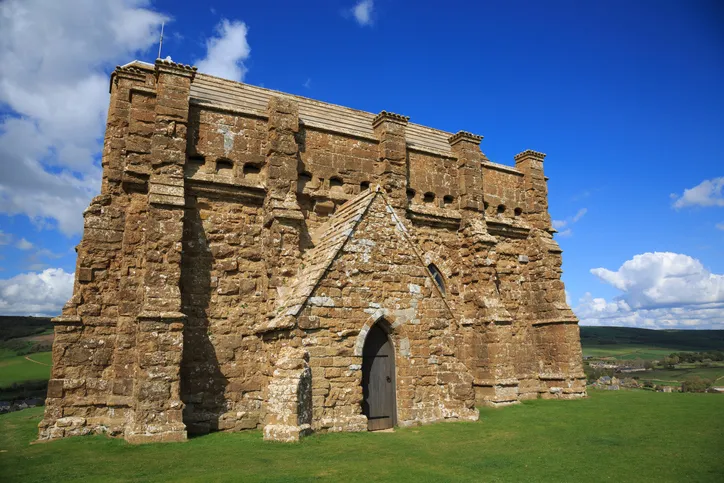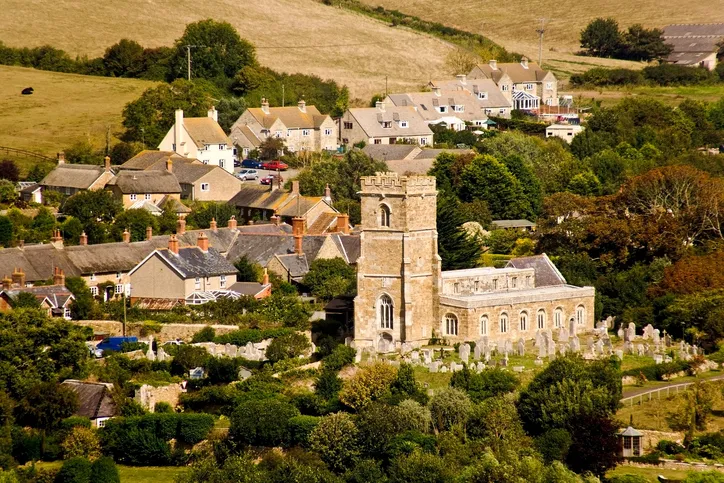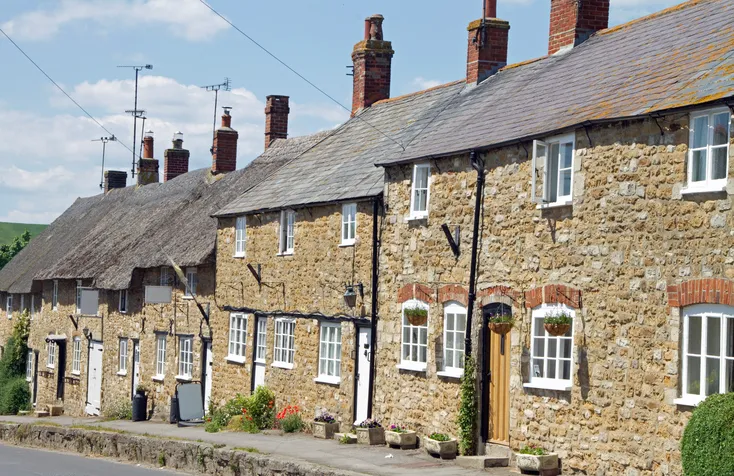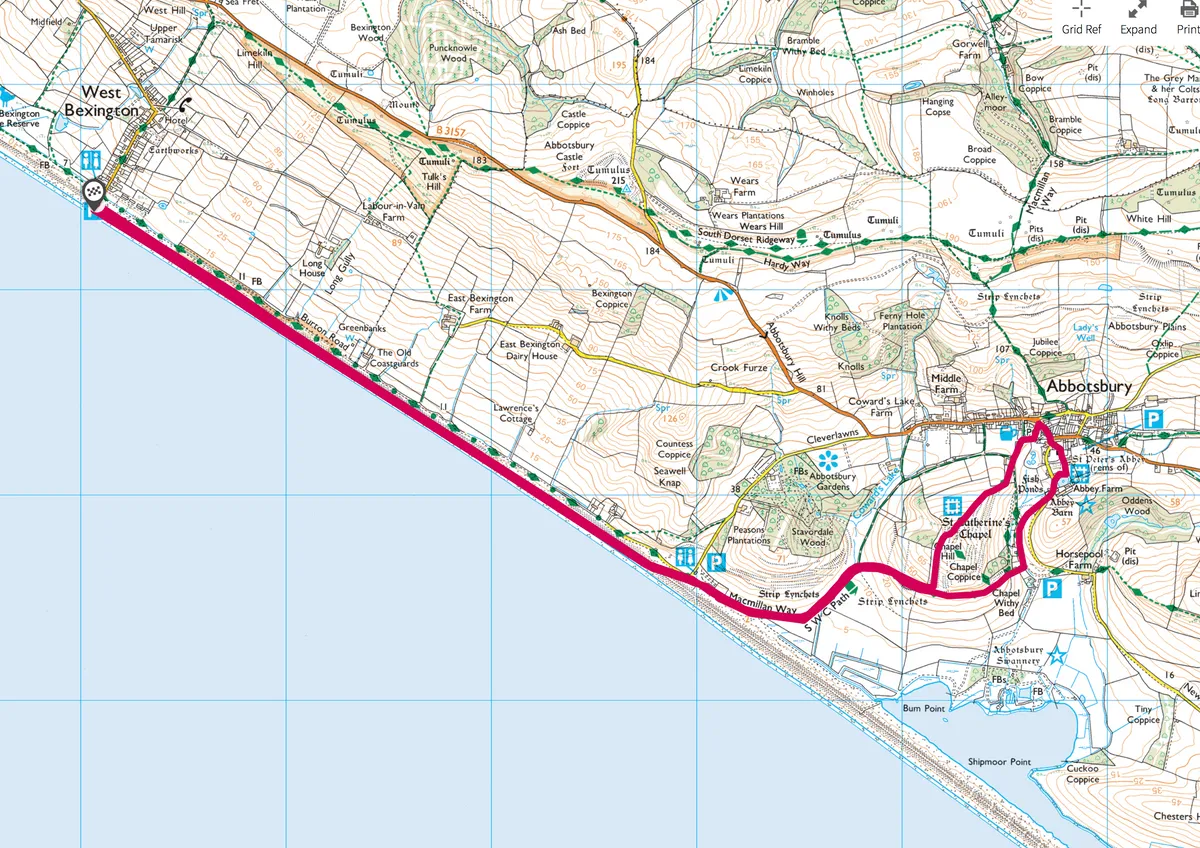The Jurassic Coast spans over 90 miles of Dorset's shoreline. You’ll scarcely find a coastline with more places to stretch your legs and explore the local landscape. And at the heart of it all is the village of Abbotsbury.
With thatched sandstone cottages, fascinating history and a charming chapel that towers above the village, it’s difficult to understand why tourists aren’t flocking in their droves to this quaint little village. And yet, it’s all the more alluring for its anonymity.

1. The coastal path
West Bexington’s car park intersects the South West Coastal Path. Looking westwards you’ll see one of Dorset’s most impressive coastal reserves, a mix of shingle, reedbed, grazing marsh – and a haven for migrant birds. Look out for flashes of brown as Cetti’s warblers take cover in the reeds.
Amble around West Bexington Nature Reserve if you aren’t pressed for time, otherwise, head eastwards along the coastal path with the crashing waves on your right. Eventually, you’ll reach a car park at Chesil Beach. If you want to shorten this walk, you can start and finish here.
Continue to follow the South West Coast Path as it gradually veers north and bends right before passing two pillboxes from the Second World War. In summer, the fields are lined with hedges buzzing with dragonflies and butterflies.
Eventually you’ll reach two stone signs with directions engraved on them. The coast path turns left – instead, head straight on past both signs, descending downhill to a stile.
2. Idyllic village

Carefully climb over the stile and follow the path and the sound of clucking chickens to Grove Lane.
On your right, the road leads down to Abbotsbury Swannery, home to the world’s only managed colony of nesting mute swans. Today, around 600 swans inhabit the Fleet Lagoon. Again, if you have enough time, it’s well worth a visit. Otherwise, turn left at Grove Lane and follow the road uphill.
Immediately, you’ll see the source of all the clucking on your left – a garden crowded with vocal hens. Continue uphill past a number of cottages, each one more pleasant than the last.
At the top of the road, turn left and follow the tarmac, passing Tithe Barn, built in the 1390’s as part of a monastery and now a children’s farm. Turn right immediately after the pond, pausing for a moment to appreciate the serenity and history of this part of the village.
3. Abolished Abbey

The path then splits, follow the left side, continuing uphill past two small and very sweet ponies to arrive at the only part of Abbotsbury Abbey that still remains.
The Benedictine abbey that once stood here is what gave Abbotsbury its name. This, and a cluster of the surrounding buildings, once made up an important and impressive monastery. However, the majority of this, including the abbey, was destroyed in Norman times, leaving behind only the gable we see today.
At the top of the path you’ll find St Nicholas Church sitting in front of you, head straight through the churchyard and take some time to explore this beautiful church from the late 14th or early 15th century. Inside you can read about the destroyed Abbey of St Peter, including a likely layout of the structure.
Leave the church via the entrance path and turn right, following the pavement up to the village high street.
4. Handsome High Street

Enjoy the terraces of sandstone cottages and potter in and out of independent shops. There’s plenty of choice if you’re starting to feel hungry.
Immediately on your right lies Abbotsbury Tea Rooms, where you can enjoy a delightful cream tea or light lunch in this 17th-century, family run cottage.
Alternatively, nestled in the heart of the village is the Ilchester Arms, a rustic hotel with fantastic food. In the winter you can sip a beer by the fire, and in the summer you can cool down with a cider in the garden.
Pass under the Ilchester’s archway from the high street, walk through the garden and find the path at the other side of the car park.
5. Charming Chapel
The path gradually ascends, bordered either side by hedges and stone-walls that seem to be alive with fluttering wings and squeaky chirps.
Turn left and continue uphill, eventually reaching a farm before passing through the gate on the left.
At this point, you’ll see a small stone chapel perched upon the hill ahead of you. Continue the ascent towards it, wading through grazing sheep as you head up the hill.
St Catherine’s Chapel overlooks Chesil Beach and the Isle of Portland to the south, and the picturesque village of Abbotsbury to the north. The monks of Abbotsbury Abbey built this chapel in the 14th century as a place of pilgrimage and solitude.

St Catherine was the patron saint of virgins and, until the late 19th century, it was custom for the women of Abbotsbury to climb up to the chapel and ask Catherine to gift them a husband.
The chapel is hollow inside and inhabits a group of white doves. If you declined to eat in the village earlier, the hillside makes for a fantastic spot to sit and have packed lunch or picnic.
6. Homewards
Descend the hill to the south, staying close to the lined hedges on the right until you reconnect with the South West Coastal Path. This time, follow it westwards and back along the coast to West Bexington.
Abbotsbury walking route and map
